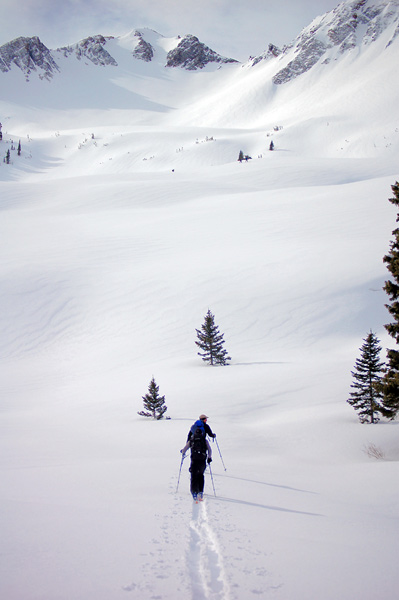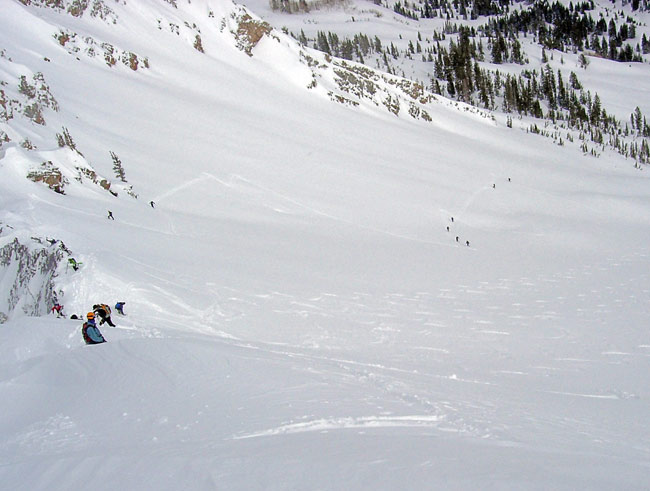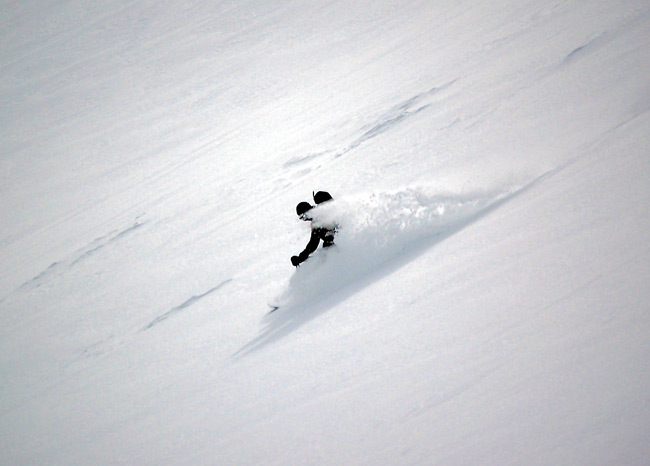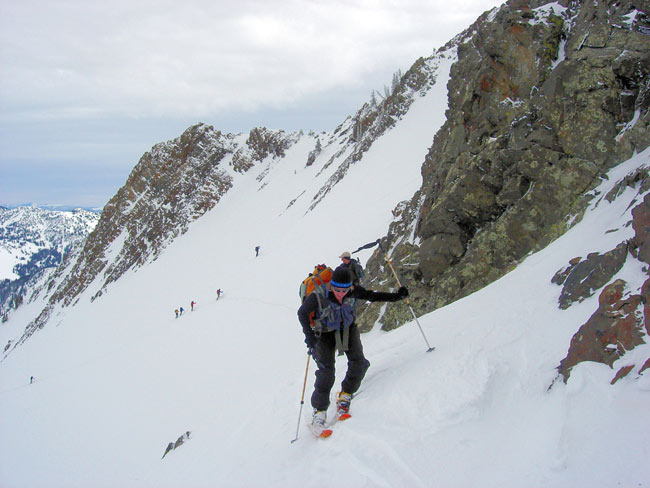February 4
They call it Wasangeles because it's a valley of 2 million Lemmings.
I suppose that would depend on one's perspective.

Having lived here all my life, I've experienced culture shock, from rural to urban.

That is not necessarily a bad thing, depending on one's place in line.

Location:
Started at the Alta guard station, ascending Toledo bowl and descending Holy Toledo continuing over the powerline ridge into main Cardiff. Ascended Cardiac ridge continuing up the ridge to the top and descending from the top, down the middle. Ascended the secondary, east facing to cardiac bowl, continuing up the bowl and exiting via Cardiac pass into Mill B south. Ascended to the cleft entry into Mineral, descending into upper Mineral, traversing left and continuing the descent down and out Mineral.
Weather:
Overcast for most of the day with winds in the 15-30 mph range from the south and west. These were moving a bit of snow. Mild temperatures.
Snow:
The snow had been blown around with considerable variability in the intensity and duration, with a best guess of 6 inches of recent snow. Most skiing was on some sort of wind affected snow. It was for the most part stuck in place, with a little surface sluffing and occasional evidence of a shallow soft slab potential. It appeared another group had triggered a couple of shallow soft slabs on the Santiago traverse in upper Mineral. These were about 6” deep and up to around 30 ‘ wide running perhaps fifty or so feet down the hill. There was also evidence of a couple of deeper releases on the east northeast facing slopes just north of Santiago in upper Mineral with debri piles a thousand vertical off the ridge. No other signs of avalanche instability.
Bottom Line:
Instabilities are related to the moderate winds of today. Localized cracking and no collapsing indicate instabilities are only within recent snow layering, with settlement likely eliminating most. Concern would be about bonding of any new snow on the variable wind crusted old snow surface.